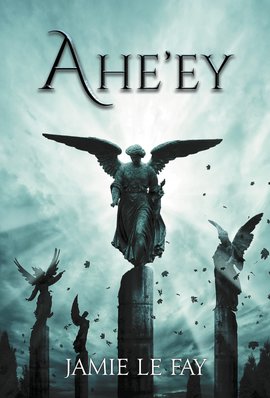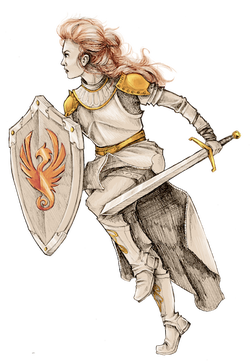Ange'el Series by Jamie Le Fay
Menu
Jamie Le Fay
From as young as I can remember, I have soothed myself to sleep by imagining epic stories of heroes, heroines, sorceresses, dragons, angels, and demons. I based my stories on the books and movies I was watching and the narratives that moved and inspired me.
I was as excited and delighted with Pride and Prejudice and Jane Eyre as I was with Battlestar Galactica (the original TV series). The Mists of Avalon, an Arthurian legend retelling from the point of view of the female characters, had as much effect on me as Cosmos by Carl Sagan.
I imagined myself occupying the boots of the hero as much as I occupied the glass slippers of the damsel in distress. The first one was what I wanted to be; the second was what society wanted me to be, and I believed them, for a little while.
Unfortunately, at that time, all the really interesting heroes were mostly male. There were very few interesting female characters on TV. I remember Charlie’s Angels (the original TV series). I used to play with tree miniature yellow cars when I was a child, and I liked to imagine that they were each one of the angels. This defines my youth: engaging in role play of feelings and emotions while playing with cars. I did not want to choose one over the other.
I am fascinated by my inner world when it comes to associating myself with the male hero. From childhood, I wanted to be him and marry him. Don’t get me wrong, I am a straight woman; that is the gender I associate myself with, and the sexuality that suits my nature, but he was really my role model, the courageous, honourable, virtuous, humble, and sometimes conflicted hero that is so well expressed in Aragorn, Darcy, or Apollo from the original Galactica. I never had time for bad boys. I was always mesmerised by stories of brotherhood: two men that would honour and risk their lives for each other. How I wished at the time to see women portrayed in the same way.
My relationship with female characters was more complex, possibly reflecting my relationship with myself and mirroring the bare, deserted female landscape provided by the media at the time. Over the years, some great multidimensional heroines were born out of the imaginations of good writers: Ripley, Sydney, Buffy, Starbuck (from the new Galactica series). Things are changing fast; we are redefining womanhood. Welcome to the world of Katniss, Tris, Arya, Merida, and Elsa, yet my youth and my inner world were most influenced by Zimmer Bradley’s Morgaine Le Fay, the underdog, the magician, and the misunderstood and undervalued priestess of my childhood who painted a vivid picture that the world does not welcome powerful women, that they are rejected, vilified, and unloved. She was the character that made me want to be the powerful dark-haired, average-looking sorceress instead of the beautiful blond girl who got to marry the king. Zimmer Bradley was outstanding at not vilifying Gwenhwyfar and showcasing different shades of womanhood and their predicaments.
I was as excited and delighted with Pride and Prejudice and Jane Eyre as I was with Battlestar Galactica (the original TV series). The Mists of Avalon, an Arthurian legend retelling from the point of view of the female characters, had as much effect on me as Cosmos by Carl Sagan.
I imagined myself occupying the boots of the hero as much as I occupied the glass slippers of the damsel in distress. The first one was what I wanted to be; the second was what society wanted me to be, and I believed them, for a little while.
Unfortunately, at that time, all the really interesting heroes were mostly male. There were very few interesting female characters on TV. I remember Charlie’s Angels (the original TV series). I used to play with tree miniature yellow cars when I was a child, and I liked to imagine that they were each one of the angels. This defines my youth: engaging in role play of feelings and emotions while playing with cars. I did not want to choose one over the other.
I am fascinated by my inner world when it comes to associating myself with the male hero. From childhood, I wanted to be him and marry him. Don’t get me wrong, I am a straight woman; that is the gender I associate myself with, and the sexuality that suits my nature, but he was really my role model, the courageous, honourable, virtuous, humble, and sometimes conflicted hero that is so well expressed in Aragorn, Darcy, or Apollo from the original Galactica. I never had time for bad boys. I was always mesmerised by stories of brotherhood: two men that would honour and risk their lives for each other. How I wished at the time to see women portrayed in the same way.
My relationship with female characters was more complex, possibly reflecting my relationship with myself and mirroring the bare, deserted female landscape provided by the media at the time. Over the years, some great multidimensional heroines were born out of the imaginations of good writers: Ripley, Sydney, Buffy, Starbuck (from the new Galactica series). Things are changing fast; we are redefining womanhood. Welcome to the world of Katniss, Tris, Arya, Merida, and Elsa, yet my youth and my inner world were most influenced by Zimmer Bradley’s Morgaine Le Fay, the underdog, the magician, and the misunderstood and undervalued priestess of my childhood who painted a vivid picture that the world does not welcome powerful women, that they are rejected, vilified, and unloved. She was the character that made me want to be the powerful dark-haired, average-looking sorceress instead of the beautiful blond girl who got to marry the king. Zimmer Bradley was outstanding at not vilifying Gwenhwyfar and showcasing different shades of womanhood and their predicaments.

As I grew into adulthood and discovered quite late in my life the welcoming arms of the feminist movement, I went through all stages of grief, including rage: rage for the status of women and girls in the world and rage for the violence, the rapes, and the lack of access to food, education, and safety. I could now identify with Kara “Starbuck” Trace and Ripley, I now understood it — rage. I know there are better characters out there to exemplify these feelings, but this exercise is about my truth and what pulls the strings of my heart and mind, and the mercurial Startbuck, is, in my inner world, a good representation of strength that is rooted in rage. Fortunately, rage does not last long in the body of a creative optimist.
As I gained the courage to write my own fiction, I was conflicted. I knew my imagination and power came from my truth, but I also knew I needed to honour the millions of voices that are screaming for better media and better representation of minorities. I am one of those voices, dissecting each new book and movie, criticising the stereotypes, the common places, and the limiting depictions of gender, race, and sexuality.
This book was a great teacher that opened my eyes about how difficult it is to write engaging fiction and do justice to the people of the world. Can a Western, Caucasian, European woman really do justice to diversity beyond gender? Can she avoid creating villains and heroes that do not fall into stereotypes and common places?
As I gained the courage to write my own fiction, I was conflicted. I knew my imagination and power came from my truth, but I also knew I needed to honour the millions of voices that are screaming for better media and better representation of minorities. I am one of those voices, dissecting each new book and movie, criticising the stereotypes, the common places, and the limiting depictions of gender, race, and sexuality.
This book was a great teacher that opened my eyes about how difficult it is to write engaging fiction and do justice to the people of the world. Can a Western, Caucasian, European woman really do justice to diversity beyond gender? Can she avoid creating villains and heroes that do not fall into stereotypes and common places?

In the end, I have done my best to honour the world while being true to myself and to the characters and stories that inspire me. To be able to pour my heart out, I had to let go of what I should be feeling and writing. I had to embrace my flaws and my inner demons. I have worked hard to express the values and virtues that I aspire in myself and in others and similarly, acknowledge that, as a white heterosexual woman, I cannot and should not attempt to express in detail the feelings and emotions of minorities that I don’t belong to. I attempted to approach race, gender, and sexuality with empathy and compassion while accepting my fallibility. I had to seek to understand the villains and to portray them with as much compassion as I portray the heroes. I am terrified knowing that seeking to understand is the first step to acceptance. I acknowledge that there are evils and actions that we should never ever accept. What an interesting fault line to dance on.
So that is all, what is left is a that fully embraces everything I love and care about: feminism, romance, friendships, social justice, environment, science, innovation, art, and economics. I found a big old pot, put in a number of archetypes that have inspired the imagination of people from the beginning of times, and mixed in the story lines and characters that have inspired me throughout my life. I seasoned it all well with social consciousness and the life lessons that have made me grow as a human being. I fully embraced my geekiness and my romantic heart. I have submitted to my, sometimes overwhelming, idealism—the idealism that keeps my fire burning, the idealism that gave me the courage to write this book.
Jamie
So that is all, what is left is a that fully embraces everything I love and care about: feminism, romance, friendships, social justice, environment, science, innovation, art, and economics. I found a big old pot, put in a number of archetypes that have inspired the imagination of people from the beginning of times, and mixed in the story lines and characters that have inspired me throughout my life. I seasoned it all well with social consciousness and the life lessons that have made me grow as a human being. I fully embraced my geekiness and my romantic heart. I have submitted to my, sometimes overwhelming, idealism—the idealism that keeps my fire burning, the idealism that gave me the courage to write this book.
Jamie
Jamie Le Fay is the author of Ahe'ey. She was born in Europe and spent her early adult years traveling around the world working in information technology and focusing on her passion: empowering women and girls. Jamie lives in Sydney, Australia where she is involved in a variety of initiatives that hope to contribute to the safety, well-being and education of girls globally. Jamie is an accomplished writer and speaker that focuses mainly on topics related to girlhood, feminism, gender equality, and the misrepresentation of minorities in media and marketing.
© Jamie Le Fay 2023
